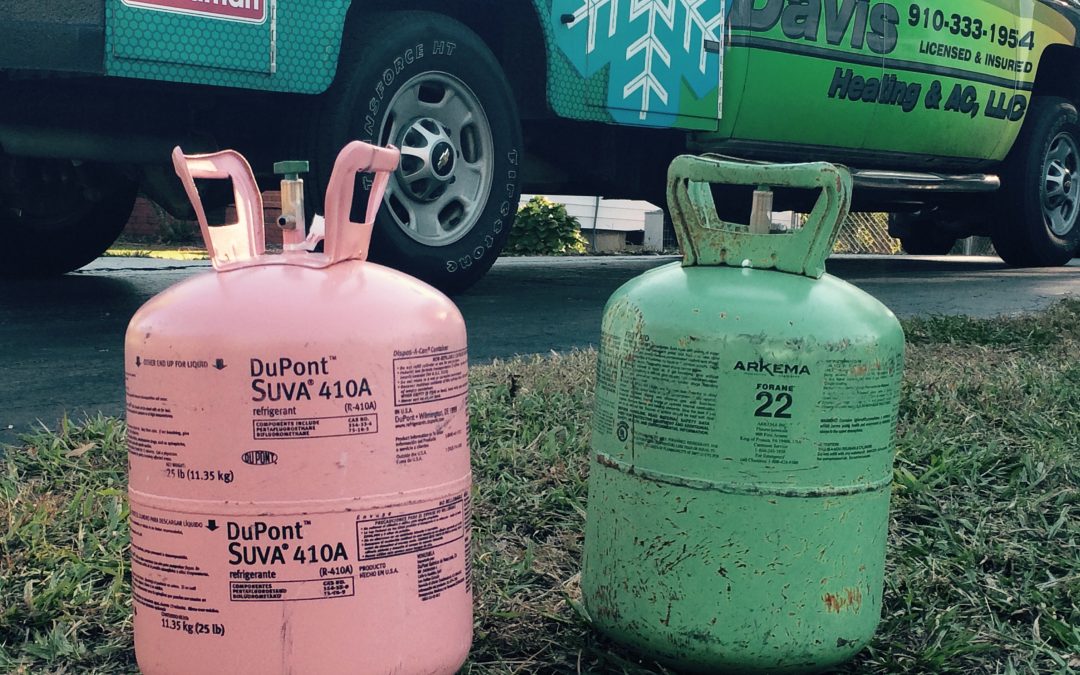R-22 refrigerant has been being phased out in favor of a new type of refrigerant: R-410A. This has some big implications for homeowners who are repairing or replacing their HVAC system anytime soon. Here are some key things you should know about R-22 and R-410A refrigerants.
Phase out of R-22 :
Since 1992, the U.S Environmental Protection Agency (EPA) has set into motion some big changes to phase out HCFC’s (hydrochlorofluorocarbons). R-22 (sometimes called Freon) has been the refrigerant of choice for almost four decades in residential heat pump and air conditioning systems. However, R-22 is an HCFC that contributes to ozone depletion. In 2010, the EPA began preventing HVAC equipment manufacturers from producing new heat pumps and air conditioners containing R-22 and production of the refrigerant itself was reduced by 75 percent. On October 16, the EPA announced its final phasedown schedule of R-22. Immediately production of R-22 will be cut in more than half. Within the subsequent years, production will be reduced until January 2020. No new or imported R-22 will be allowed in the United States on or after January 1, 2020.
R-410A: EPA Approved
R-410A refrigerant (sometimes called Puron) has been approved for use in all newly-manufactured air conditioners and heat pumps. This refrigerant is a hydro-fluorocarbon (HFC) which does not contribute to ozone depletion. R-410A is able to absorb and release more heat than R-22 which reduces the risk of compressor burnout due to overheating. Also, R-410A refrigerant operates at different pressures and uses different lubricants which make these systems more efficient and durable.
What Does It Mean for You?
The price of R-22 has skyrocketed these last few years and is only expected to rise as production decreases. For homeowners, this means the costs of repairs on systems that use R-22 will significantly increase. And eventually these systems will not be able to repaired at all. As the cost of R-22 continues to rise, you might find that you are better off replacing your old system with a more efficient R-410A system. Because R-410A refrigerant requires different components than R-22, you CANNOT replenish a system that uses R-22 with R-410A refrigerant.
A Note About Dry Charging:
Though R-22 was outlawed in 2010 for use in new units, some companies are taking advantage of the law by producing “dry charge” units. These are new units that are not pre-charged from the factory. Instead, the R-22 refrigerant is installed after the equipment has been placed. In most cases, it is technically illegal for North Carolina contractors to install a dry charge unit due to state regulations on matched systems. However, there are some HVAC contractors that will install a dry charge unit anyway. Despite being possibly illegal, there are other reasons why a homeowner should not have a dry charge unit installed. First of all, dry charge units typically offer much shorter warranty periods and in most cases any manufacturer warranty would be voided as soon as the unit was installed. Also, the limited supply of R-22 refrigerant will make any future repairs extremely expensive if available at all. Lastly, R-410A systems offer greater efficiency, which saves you money, and is better for the environment.
If you have any questions about R-410A and R-22 refrigerants, or if you would like a system serviced or installed in your home, contact Davis Heating & AC. We service the Onslow County area, including Jacksonville, Topsail Beach, Swansboro, and Emerald Isle, NC.


